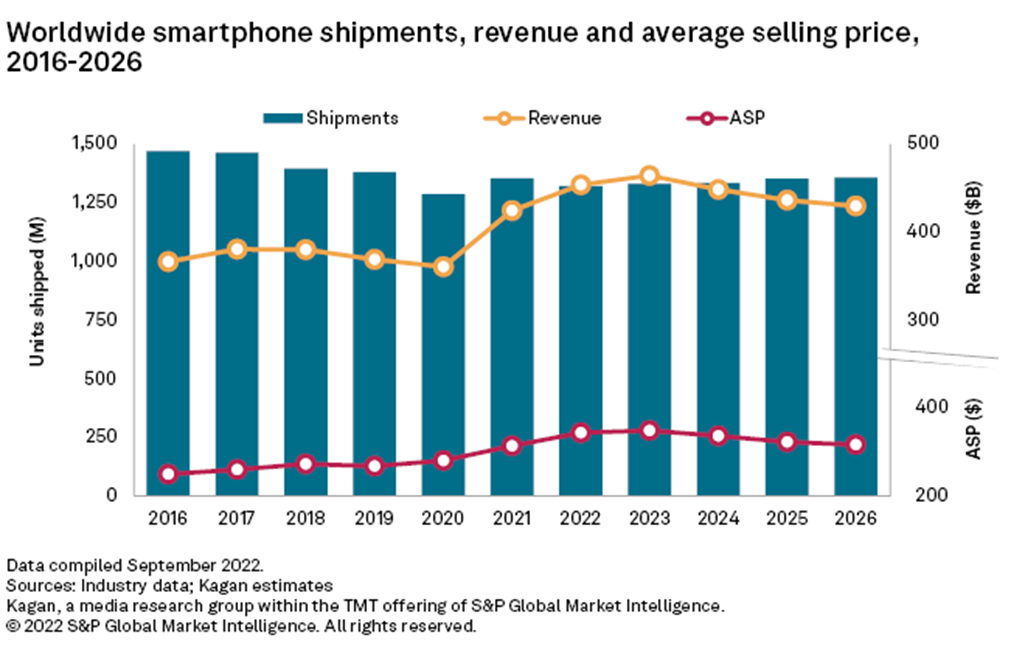S&P Global Offerings
Featured Topics
Featured Products
Events
S&P Global Offerings
Featured Topics
Featured Products
Events
S&P Global Offerings
Featured Topics
Featured Products
Events
Banking & Capital Markets
Economy & Finance
Energy Transition & Sustainability
Technology & Innovation
Podcasts & Newsletters
Banking & Capital Markets
Economy & Finance
Energy Transition & Sustainability
Technology & Innovation
Podcasts & Newsletters
S&P Global Offerings
Featured Topics
Featured Products
Events
Blog — 28 Sep, 2022

By Milan Ringol
After a recovering in 2021 from a string of flat to down years that culminated with a near 7% drop in 2020, worldwide smartphone shipments are expected to decline by 2.4% in 2022 as inflation, component shortages and lengthening replacement cycles drive down demand for smartphones in the near term.
Beyond that, shipments are forecast to gradually recover as component shortages improve, supply chain disruptions decrease, and device adoption grows in underpenetrated markets.
However, Kagan expects these dynamics to allow the market only a modest improvement over 2021’s 1.35 billion units, growing annual shipments at a compound annual growth rate of less than 1% through 2026 to 1.36 billion units.

Key factors expected to impact the smartphone market in the coming years include:
Kagan's global smartphone forecast is built upon analysis of publicly available industry reports and proprietary data models. The report provides estimates on shipments, revenue, average selling prices as well as market share estimates.
Blog
Blog
